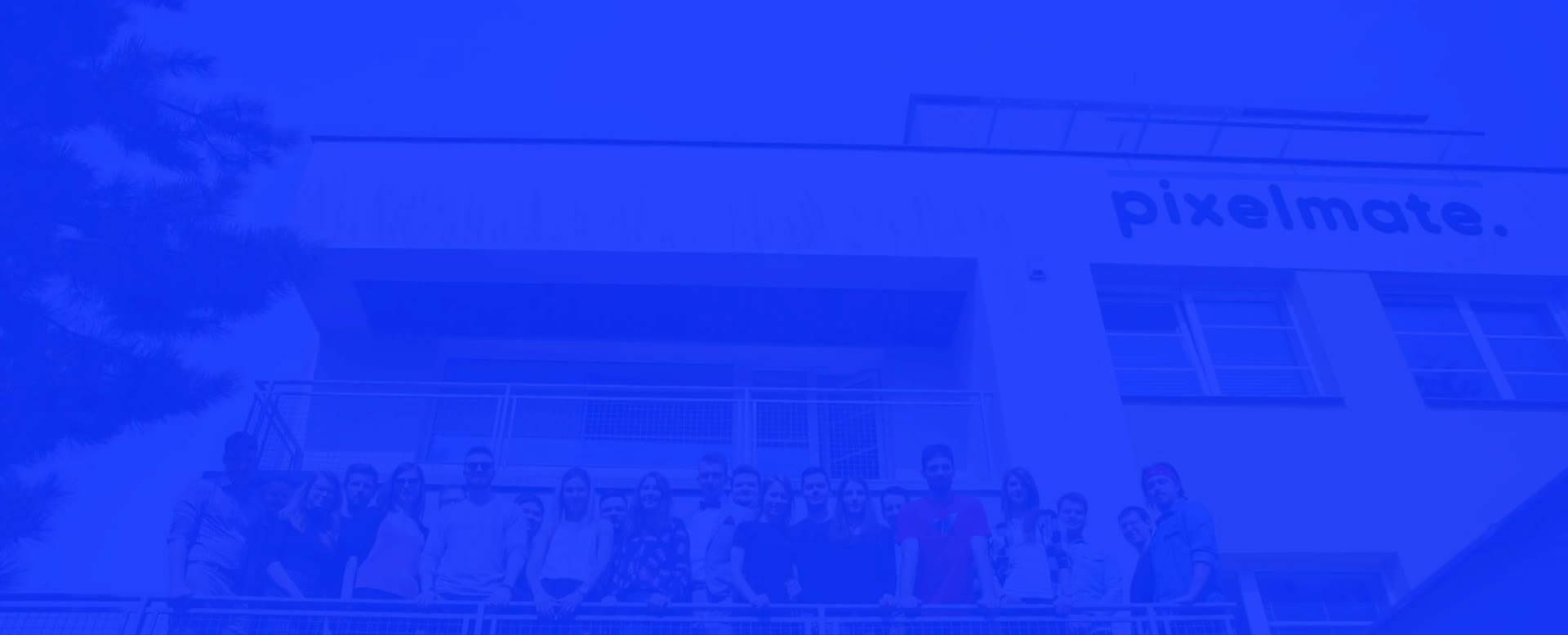Nowadays, it is no longer necessary (and usually not even reasonable) to develop separately for iOS and Android using the native Swift and Kotlin languages, which is a high-quality but also very expensive solution. Instead, multi-platform frameworks are coming on the scene, allowing you to create one app for both platforms at the same time. And here comes the question - Flutter or React Native?
Native development - quality but expensive
Let's start from native development. If you decide to develop your app natively, you'll need two teams - one for Swift (iOS) and one for Kotlin (Android). The result will be a perfectly optimized app, but with high development, testing and maintenance costs. For most projects, this approach is therefore unnecessarily challenging and expensive. However, we at Pixelmate have a native development team in-house and we still develop some apps natively.
React Native - a veteran that is giving way
Facebook's React Native (now Meta) has long been one of the most popular solutions for cross-platform development. Built on JavaScript and React, it offered developers simplicity and speed. But it's been quite a few years since it was first introduced, and technology has moved on considerably in the meantime.
Today, React Native is seen more as an aging platform. Although it still works and can be sufficient for some simple applications, it has its limits, especially in the areas of performance, stability and maintenance. Application development in React Native is often expensive precisely because of the need to solve various compatibility and performance issues, yet it is still offered by many developers today.
Flutter - the modern choice of professionals
Flutter, developed by Google, has become a clear favorite among multiplatform technologies in recent years. It uses the Dart language and enables the development of beautiful, fast and responsive applications with native performance.
The main advantages of Flutter include:
Native development - quality but expensive
Let's start from native development. If you decide to develop your app natively, you'll need two teams - one for Swift (iOS) and one for Kotlin (Android). The result will be a perfectly optimized app, but with high development, testing and maintenance costs. For most projects, this approach is therefore unnecessarily challenging and expensive. However, we at Pixelmate have a native development team in-house and we still develop some apps natively.
React Native - a veteran that is giving way
Facebook's React Native (now Meta) has long been one of the most popular solutions for cross-platform development. Built on JavaScript and React, it offered developers simplicity and speed. But it's been quite a few years since it was first introduced, and technology has moved on considerably in the meantime.
Today, React Native is seen more as an aging platform. Although it still works and can be sufficient for some simple applications, it has its limits, especially in the areas of performance, stability and maintenance. Application development in React Native is often expensive precisely because of the need to solve various compatibility and performance issues, yet it is still offered by many developers today.
Flutter - the modern choice of professionals
Flutter, developed by Google, has become a clear favorite among multiplatform technologies in recent years. It uses the Dart language and enables the development of beautiful, fast and responsive applications with native performance.
The main advantages of Flutter include:
- Great performance thanks to its own rendering engine (it doesn't use native UI components like React Native).
- Fast development and hot-reload, which significantly speeds up developers' work.
- Strong community and support from Google, ensuring long-term stability.
These advantages make Flutter the technology of choice today among professional developers, startups and corporations. It enables rapid application development, sustainability and scalability with minimal compromise.
And what to avoid?
There are still outdated or poorly maintained technologies on the market that may seem tempting due to their low entry price, but pose a problem in the long run. Examples of such technologies include:
- Xamarin - once popular under the wing of Microsoft, but now no longer in active development.
- Ionic - a hybrid solution based on web technologies, which lags especially in performance.
- Other older frameworks without active support and community.
The use of these technologies can lead to maintenance, compatibility and safety issues, so we recommend avoiding them altogether. Recently, even apps that are outdated, slow and inadequately designed by Apple and Google are being pulled directly from stores.
Summary
If you're considering mobile app development today, you basically have three options:
- Native development (Swift/Kotlin) - expensive, but high quality. Suitable for very specific applications.
- Flutter - modern, powerful, widely supported. Ideal for most projects.
- React Native - still functional, but on the decline. Less suitable for new projects.
Technology is evolving rapidly, and if you want to build your application on a solid foundation, Flutter is the safest and most efficient choice today.
Not sure about the technology? Contact us to discuss.
